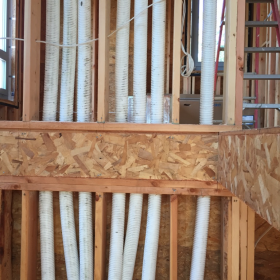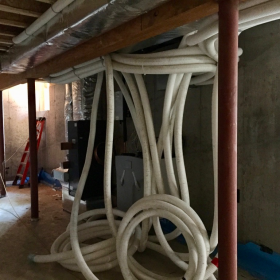Passive House: Fresh Air by Design
- PIMM Wix Team

- Sep 27, 2017
- 1 min read
My first reaction after learning that a passive house is virtually sealed from the exterior was that it would feel claustrophobic. How can you live in a house that is completely sealed up? The answer is you don’t in a passive house. The science of the passive house incorporates a constant flow of fresh air into the house while exhausting an equal amount of inside air. The device used is either an ERV (Energy Recovery Ventilation unit) or an HRV (Heat Recovery Ventilation unit) depending on your climate. These units let the air that is being exhausted exchange their heat/cool or energy to the air coming in. Some of these units are over 90% efficient. Typically fresh air is introduced to the bedrooms and living rooms and the air is exhausted from the bathrooms and kitchen.
In the Greenport Passive House project, we have a mess of supply and exhaust tubes being run throughout the house. Having never designed a passive house I was surprised to see so many tubes. At first, this seems a bit complicated but you quickly understand how this is working. I welcome the constant flow of fresh air. Who wouldn’t? It sounds like a good idea for any house.
-Wayne Turett
The mechanical contractor for the Greenport Passive House project is Kolb Mechanical
The mechanical engineering design is by Jordan Woods at Zero Energy Design









Comments